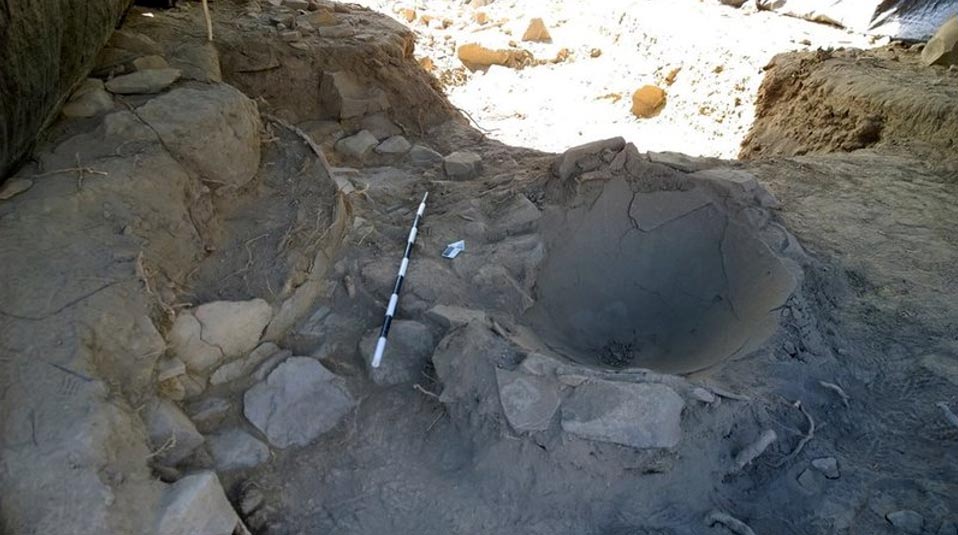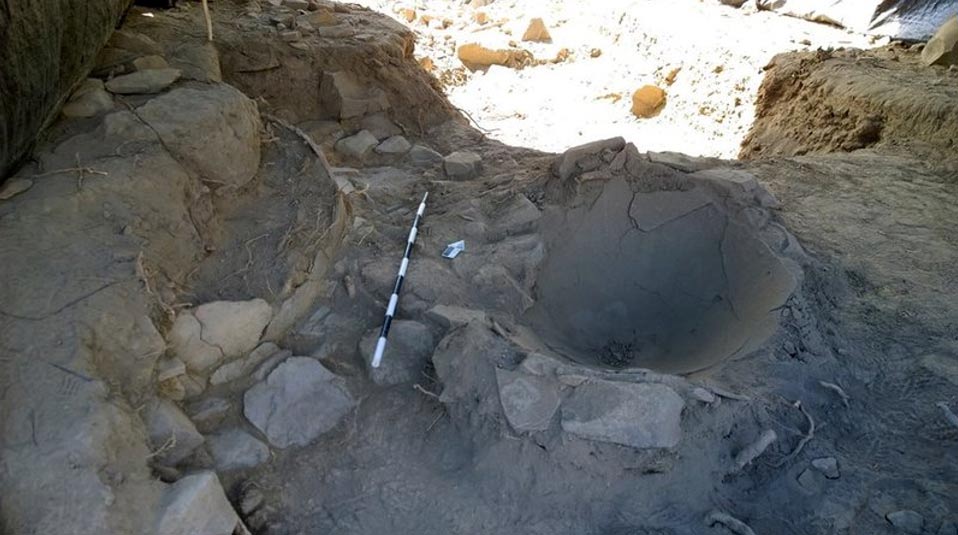

A giant and well-rounded discovery has been unearthed in Cosma, Peru. They look like the remains of giant dinosaur eggs, but archaeologists believe the newly found structures are either giant pots or ossuaries for housing human remains. Excavation will continue at the site to bring more information and hopefully more artifacts to light. Until then, Ancient Origins asks our readers to put on their thinking caps and analyze the large artifact recently uncovered.
New discoveries are underway at the Karecoto site near the village of Cosma in the Nepeña Valley, Peru and Co-project Director of the Proyecto Arqueologico Distrito de Cáceres Ancash (PADCA), Kimberly Munro was excited to share them with Popular Archaeology Magazine.
While Munro refrains from drawing any conclusions regarding the newest artifacts to the press, she has stated on her Facebook page that at least one was found to contain human remains.
“We’re still excavating,” posted Munro on her Facebook page, “but lots of Formative material inside as well with the infant…plus there is another infant located on the outside of the olla – directly to the north of baby #1!”

Excavation site, Cosma, Peru (PADCA)

Two other artifacts discovered, Cosma, Peru (Cosma Archaeological Project)
The site of Karecoto is a large ceremonial mound complex, which has been dated to the Early Horizon period (900-1 BC) in Peru. “From the density and styles of the ceramics, and the different archaeological components, I believe Cosma has been continuously occupied since at least the Early Horizon,” Munro told Popular Archaeology Magazine.
Munro began excavations at Karecoto in 2014 with the goal to excavate and map the site elements. PADCA asserts on their website that this site is useful in the understanding of the “regional socio-political climate of highland and coastal Ancash during the Early Horizon.”
In 2014 excavations at Karecoto, a series of raised platform structures (ceremonial temple mounds) complete with underground tunnels and galleries were found.
Karecoto measures about 250 meters (820 feet) long and 70 meters (229 feet) wide. The top is truncated and Munro told Popular Archaeology in 2014 that it includes “Walls and domestic structures surrounded by what appear to be prehistoric canals.”

Nepeña Valley, Peru. Karecoto is the large mound visible in the center of the photo. (PADCA)
Here we have an open window for readers and archaeologist aficionados to provide their suggestions of what the recent discovery may be. Is it a giant pot? If so, what was it used for? If it is not an ancient pot, what was it, and how was it used?
As excavation continues, more information will undoubtedly be provided.